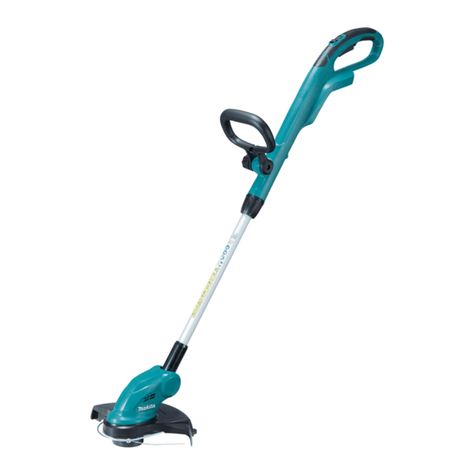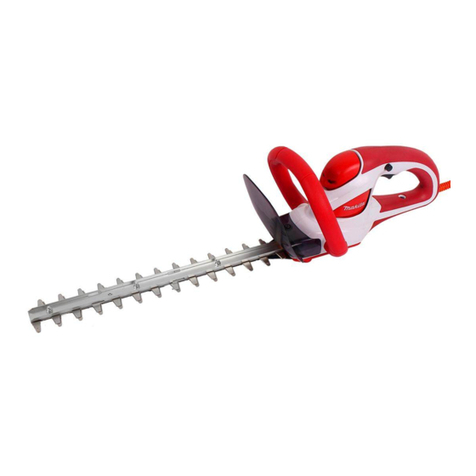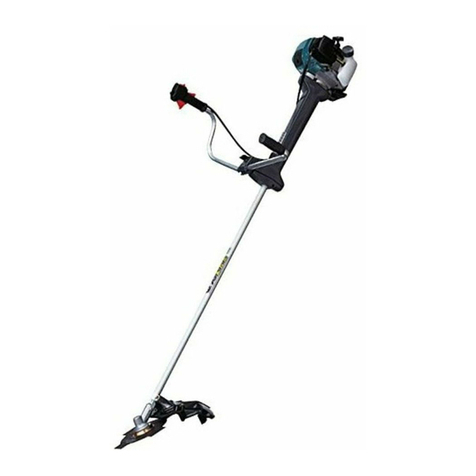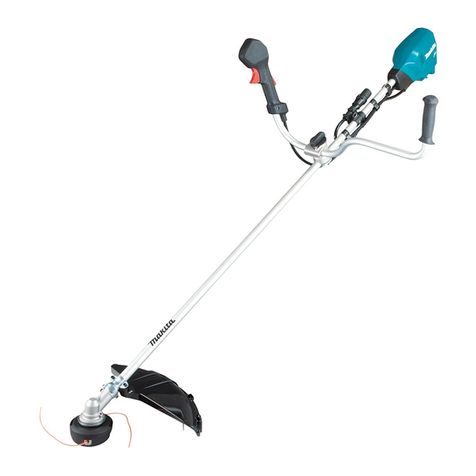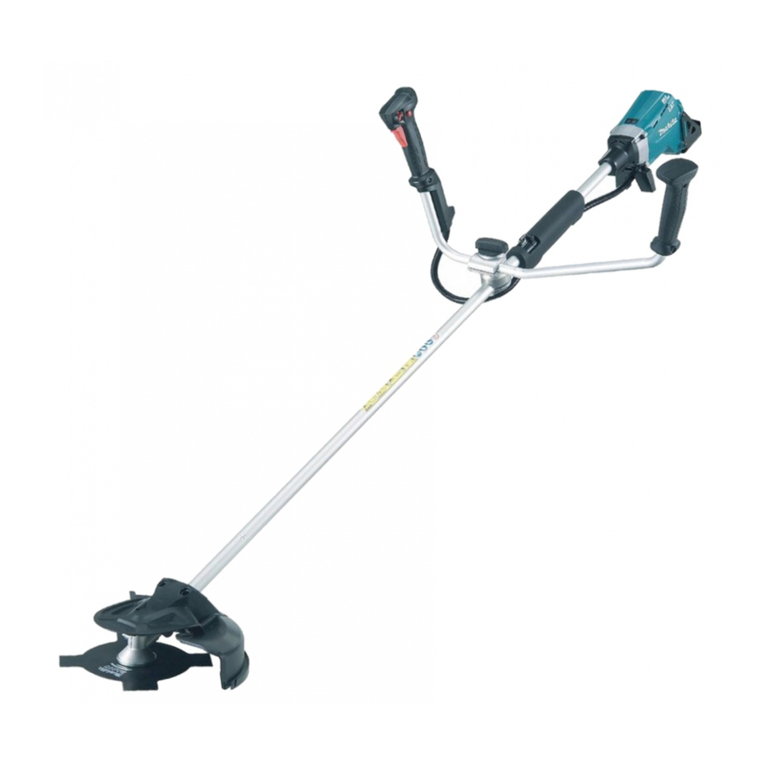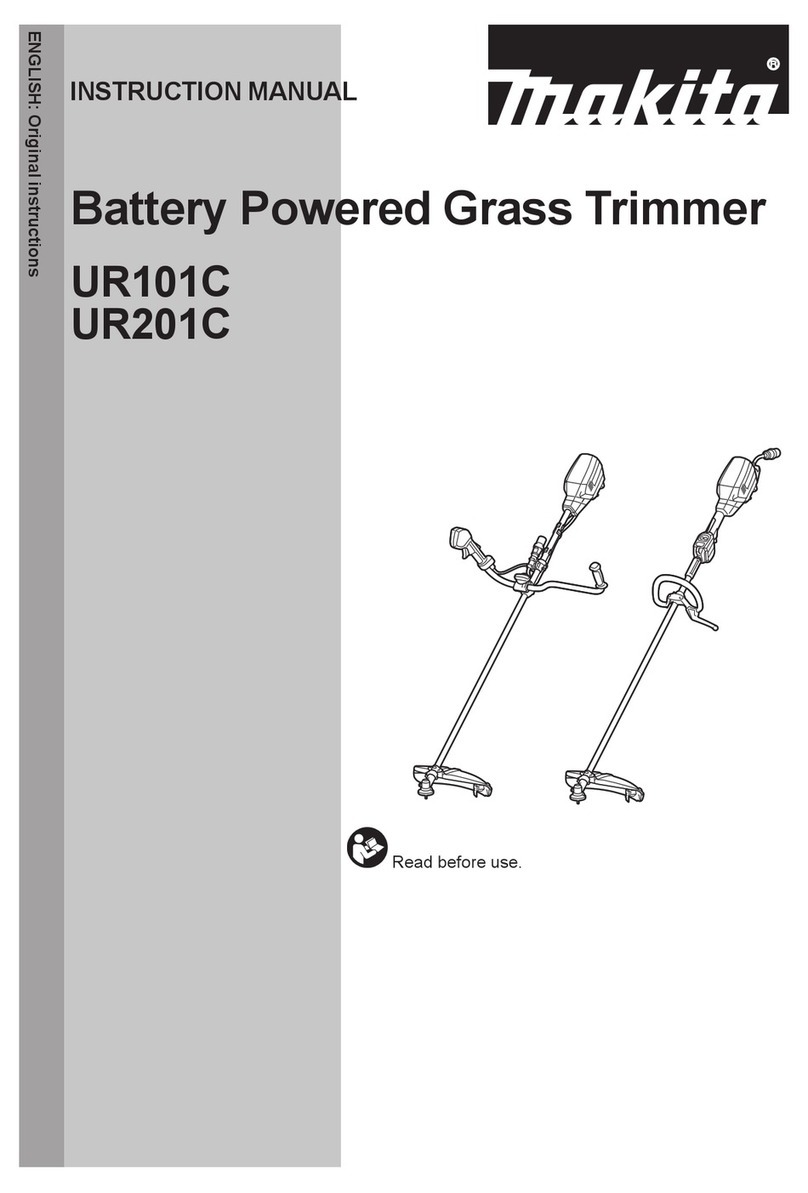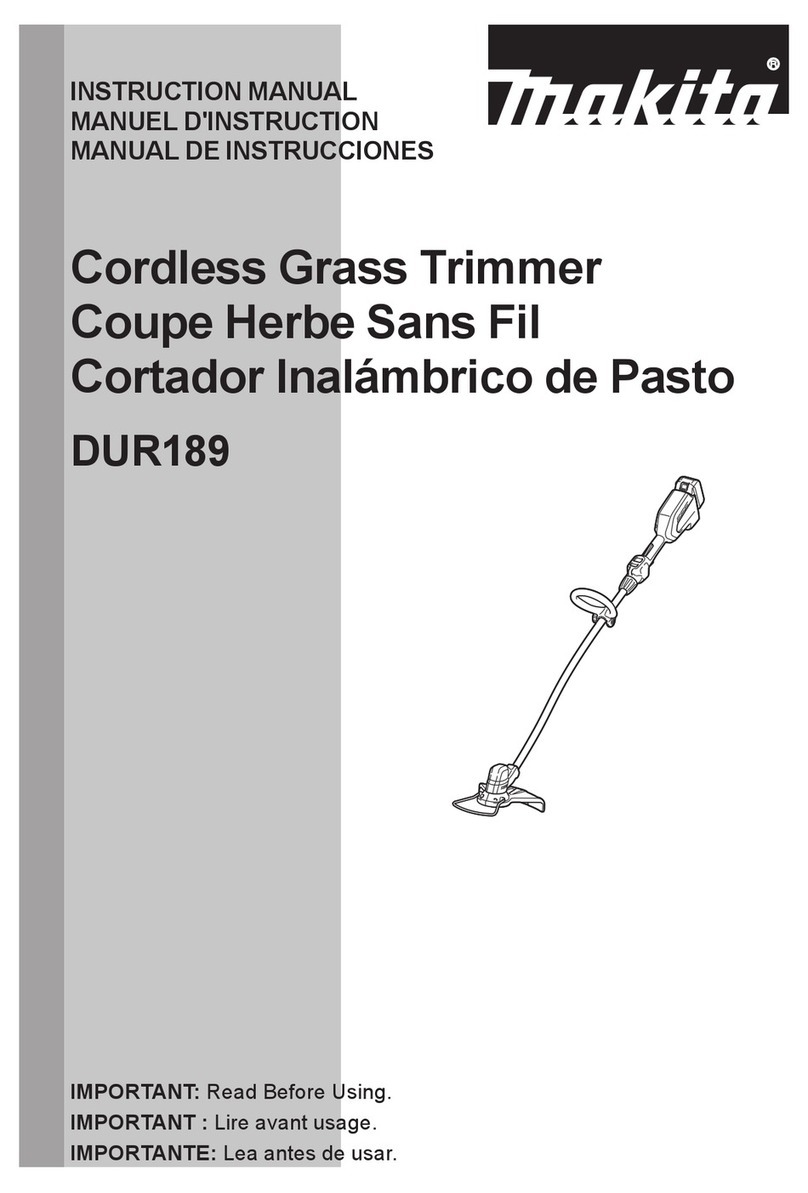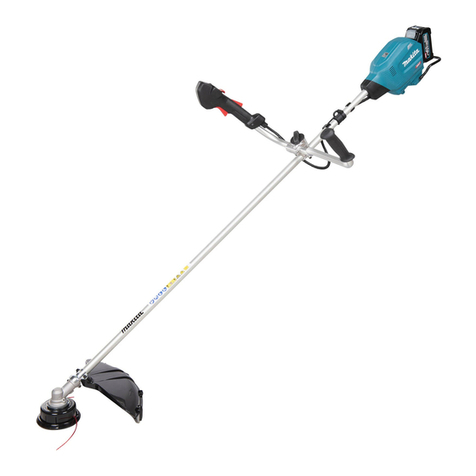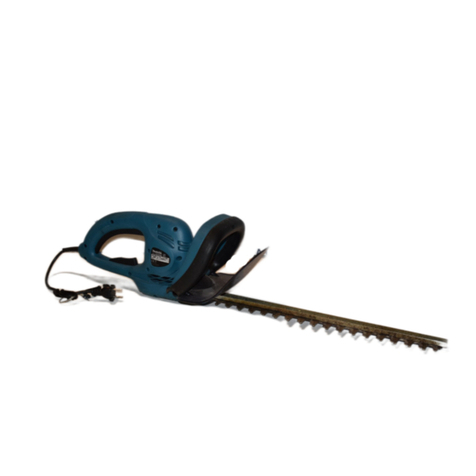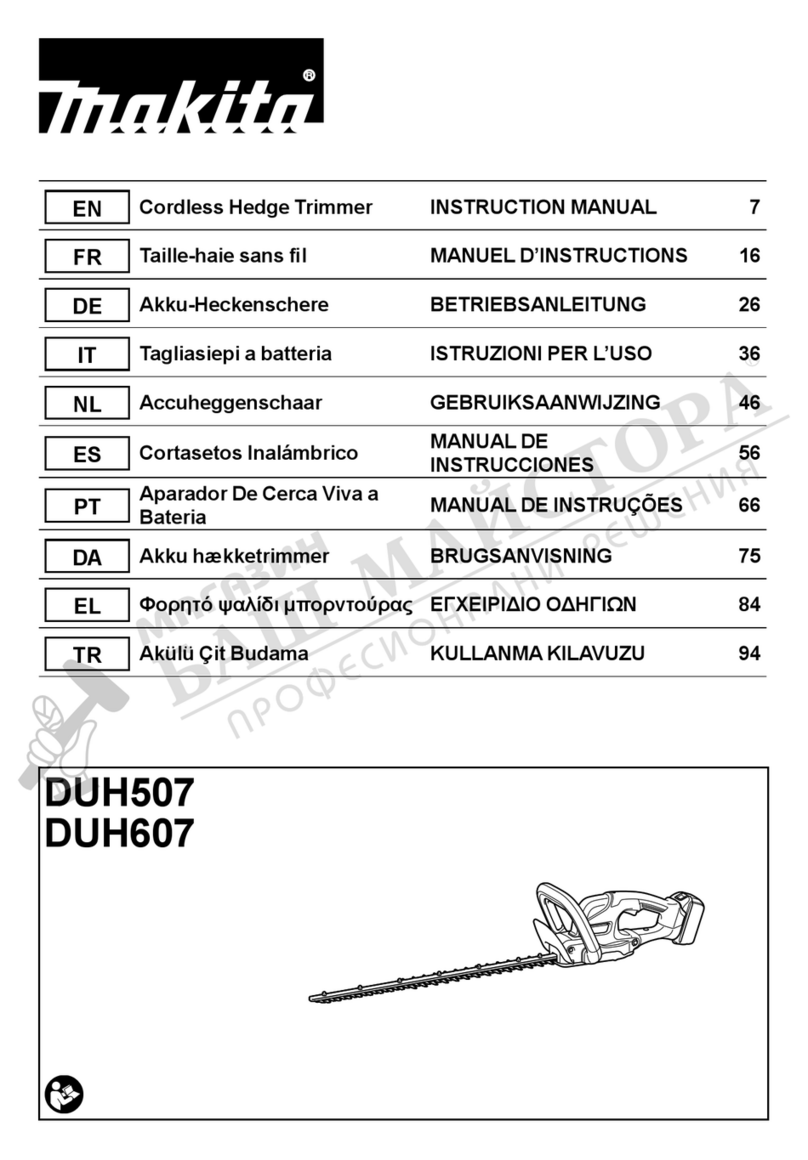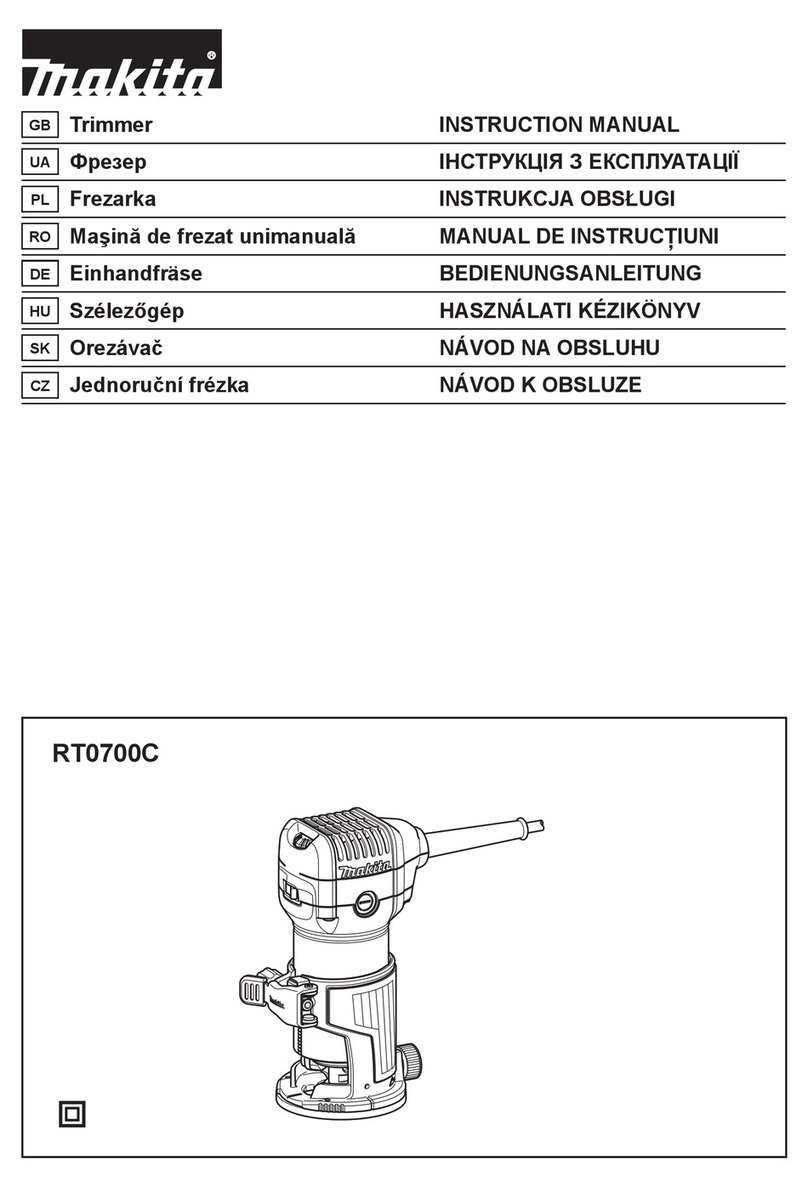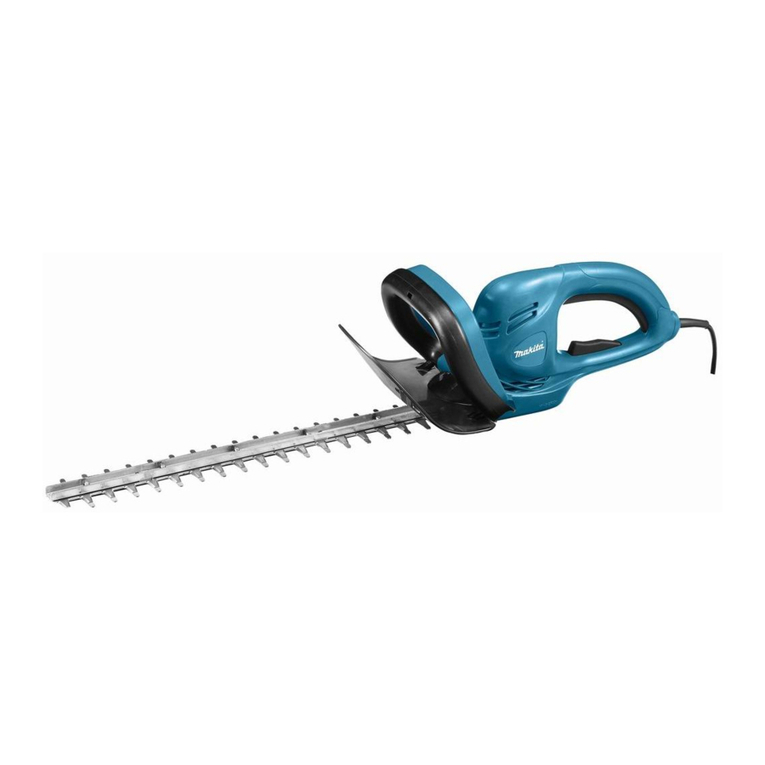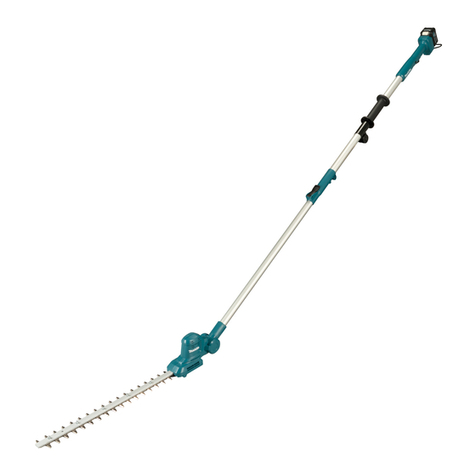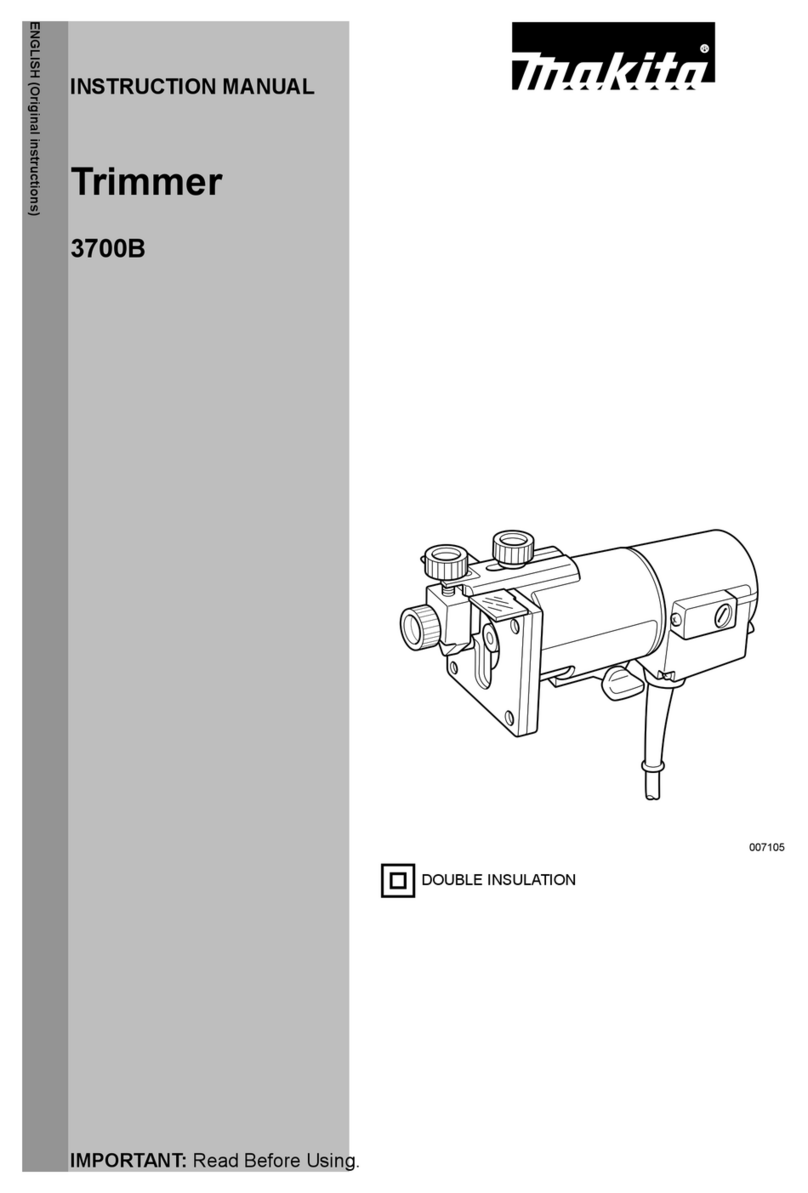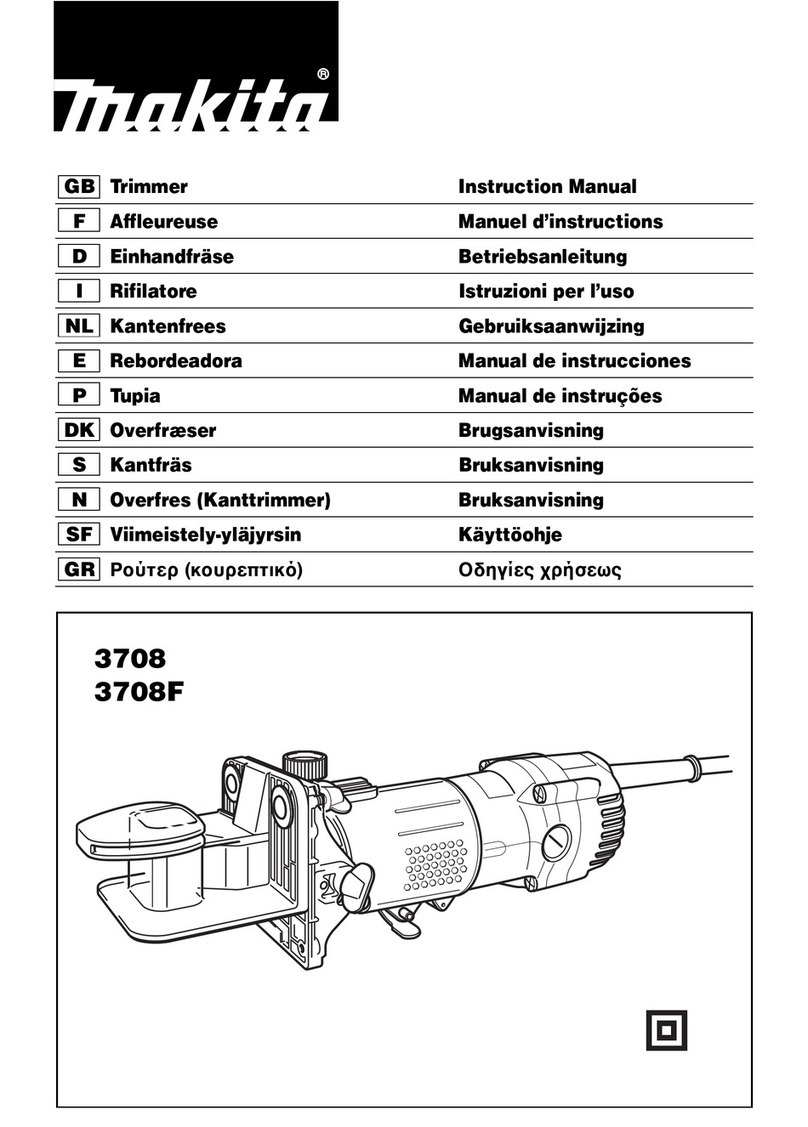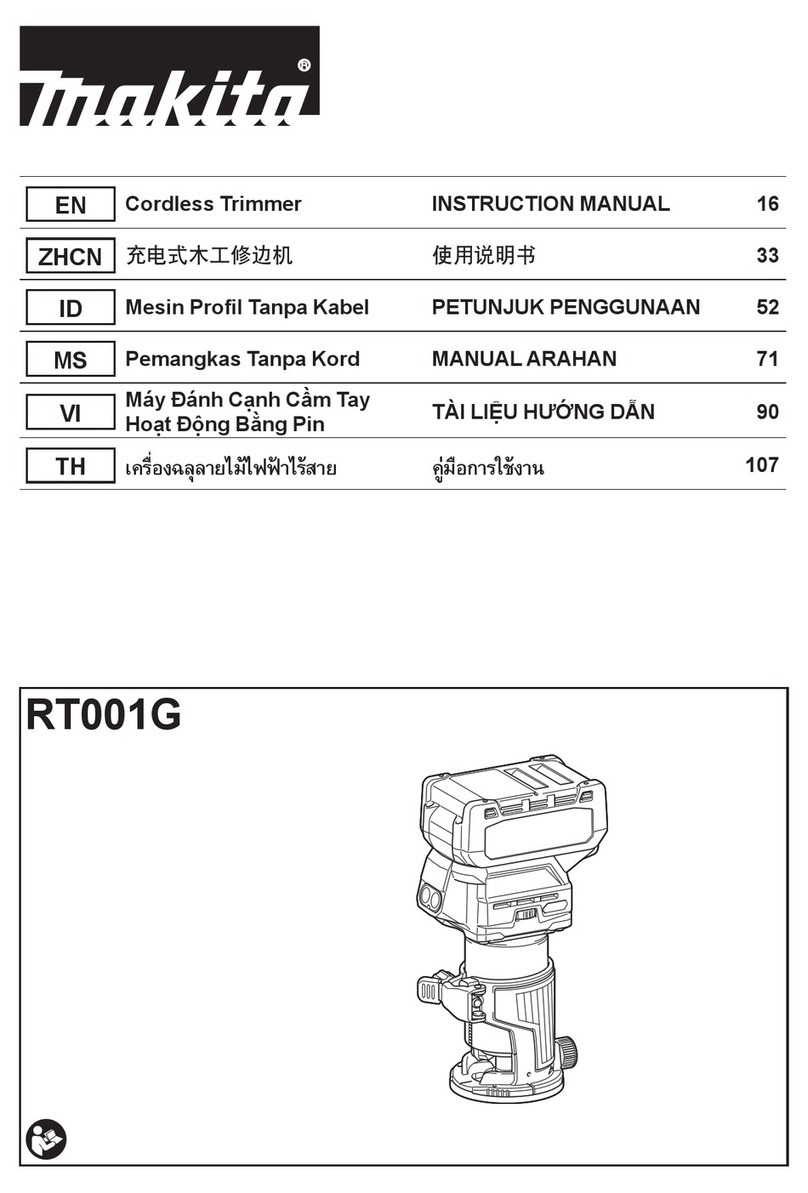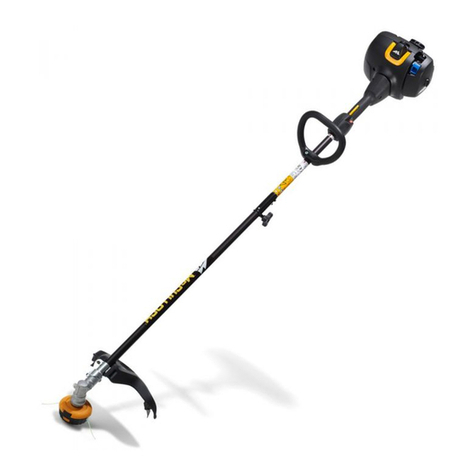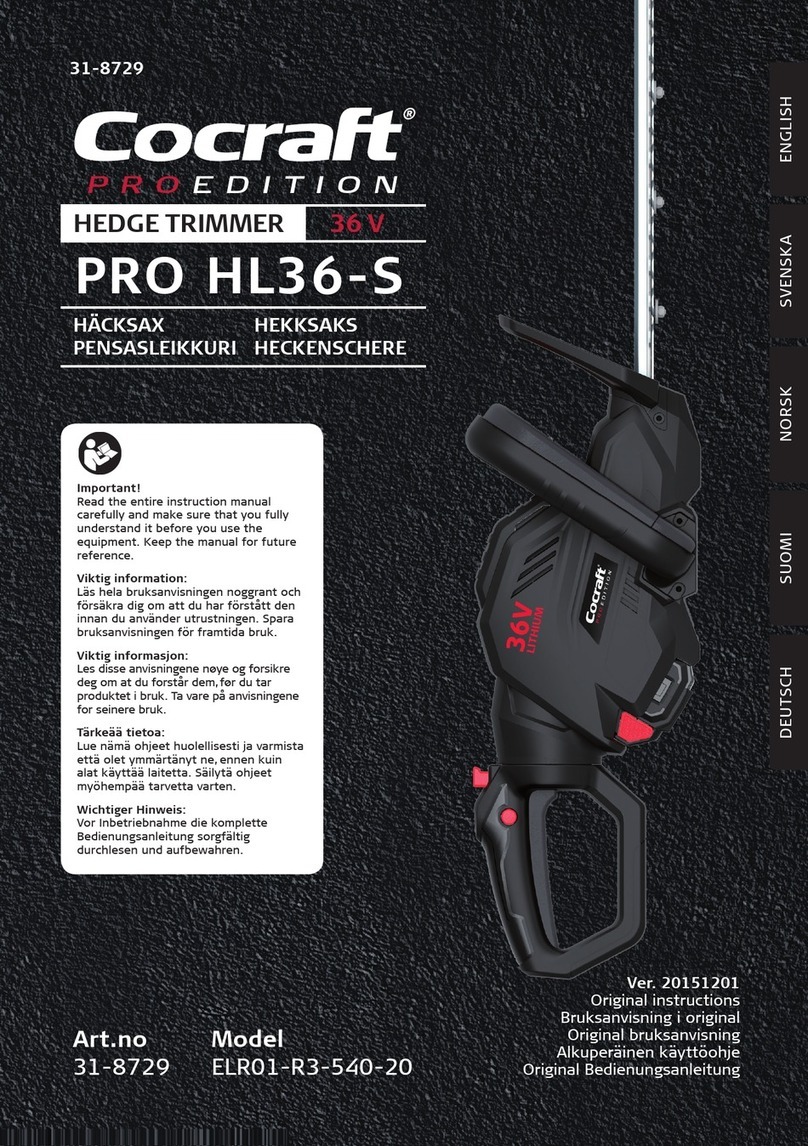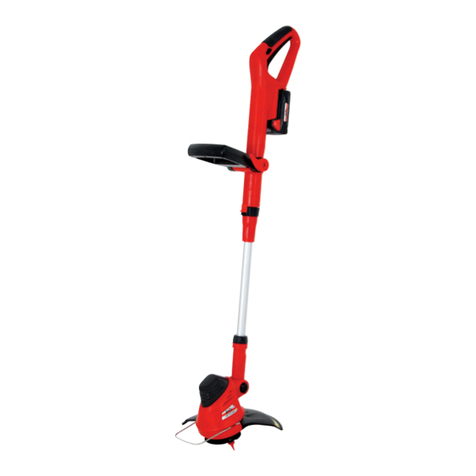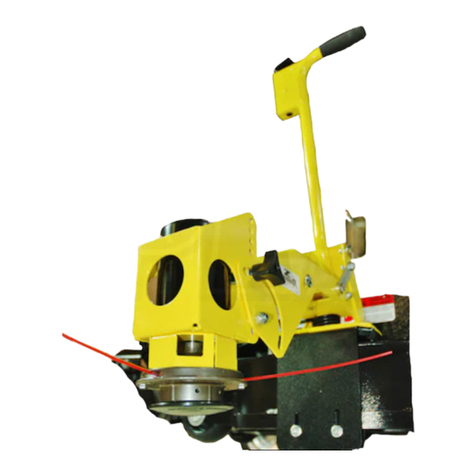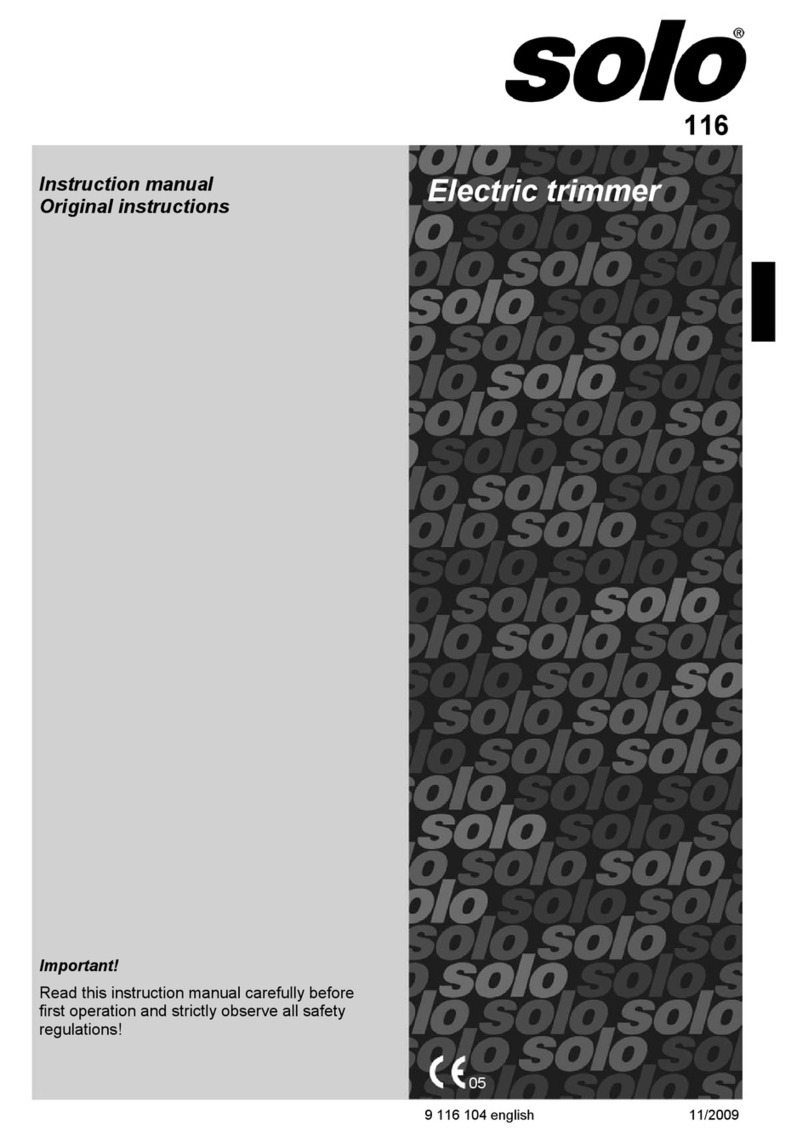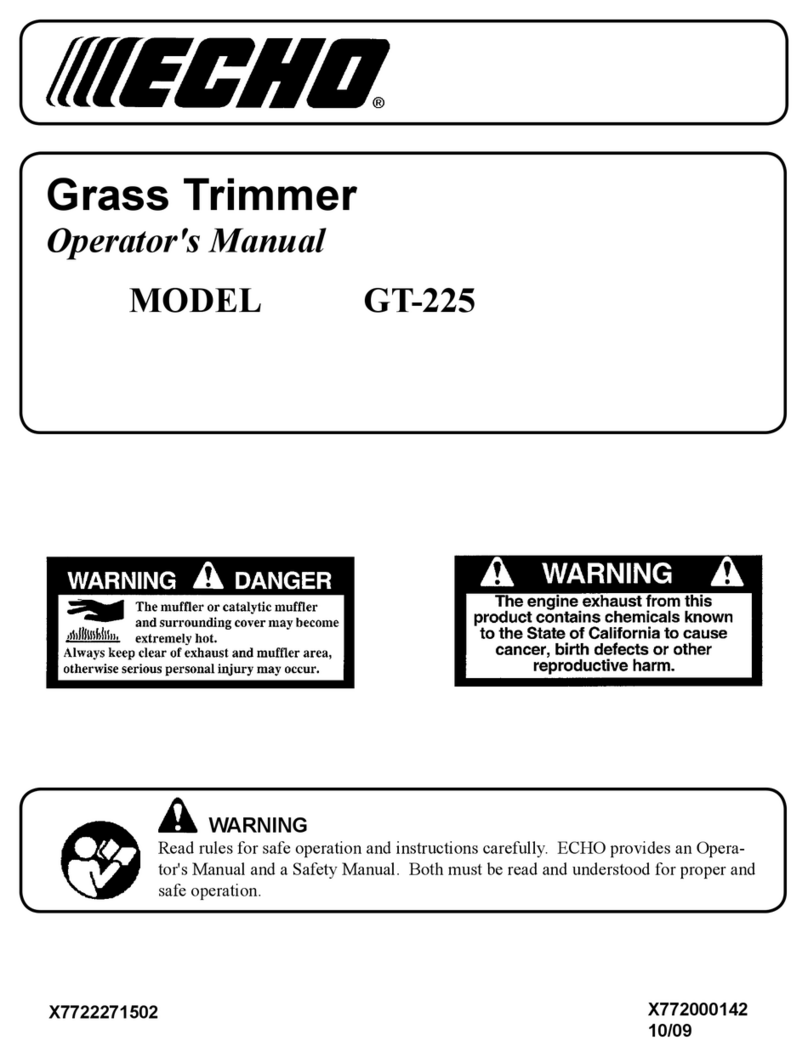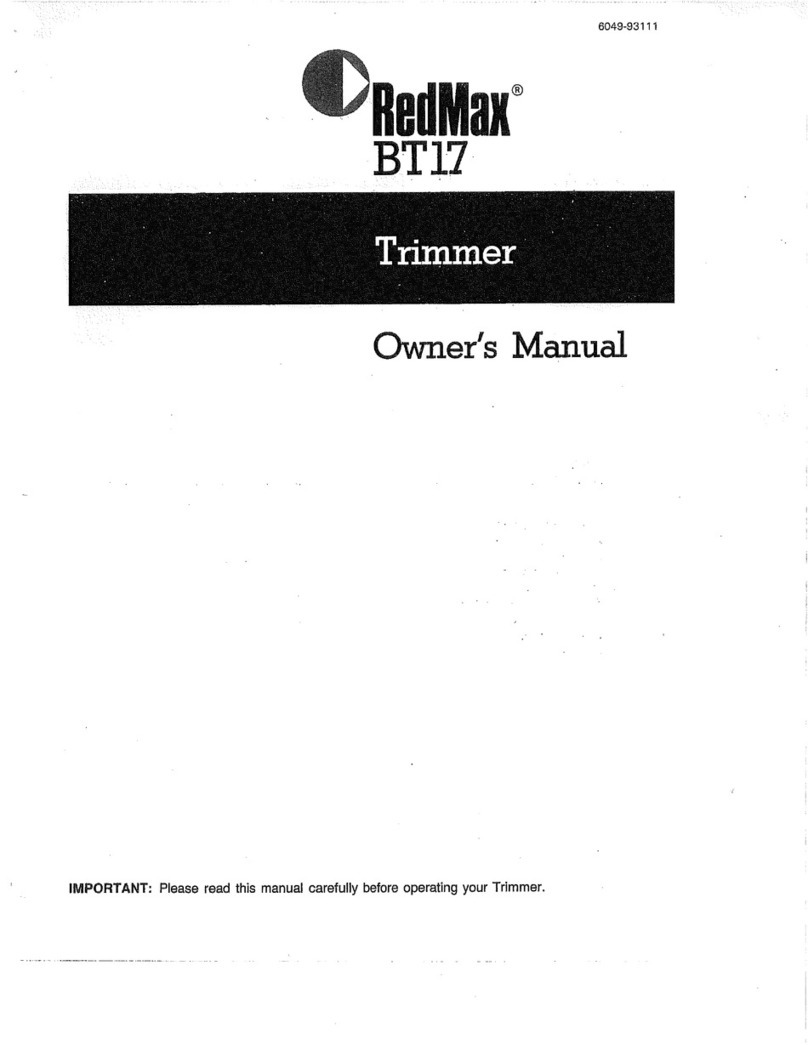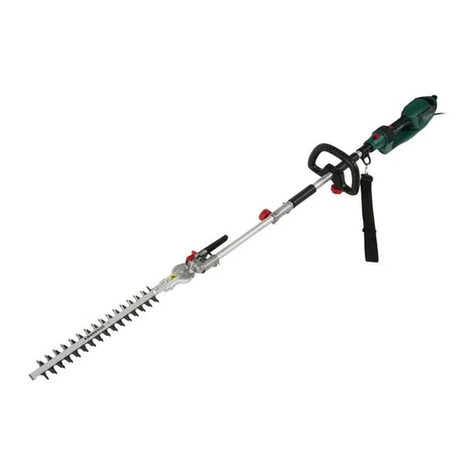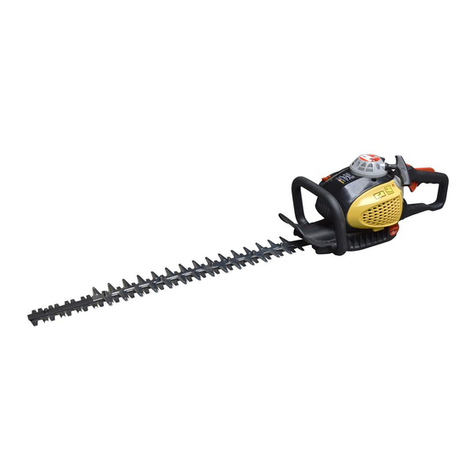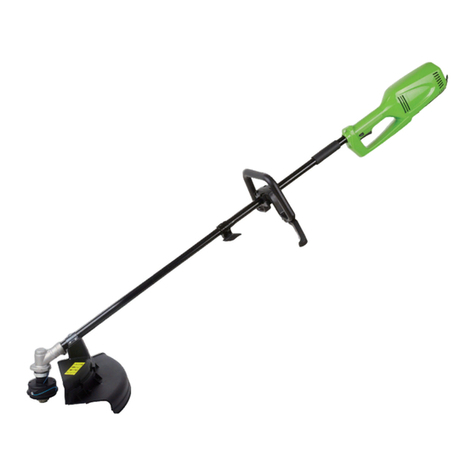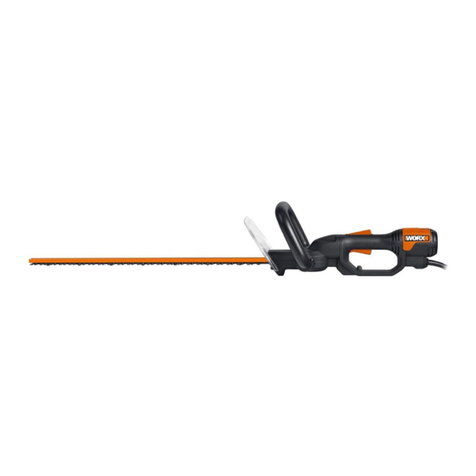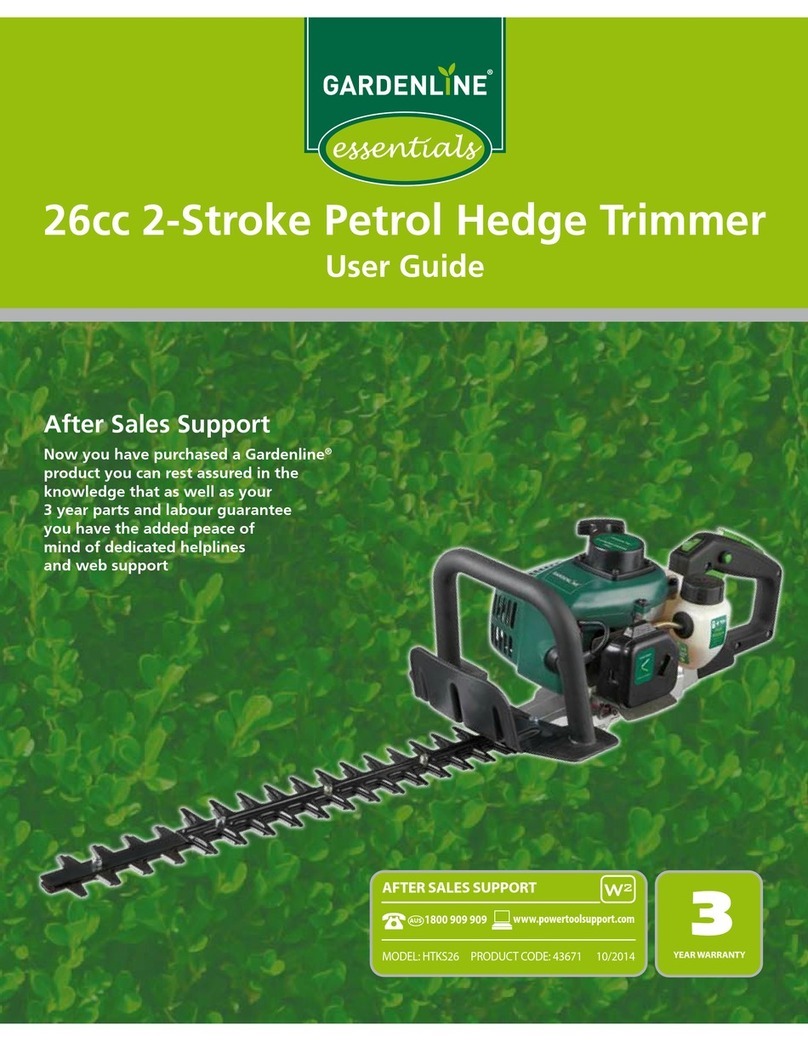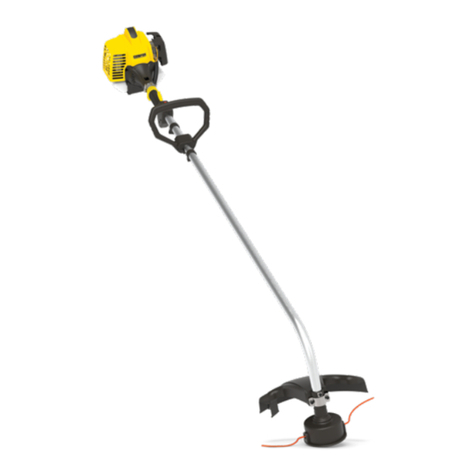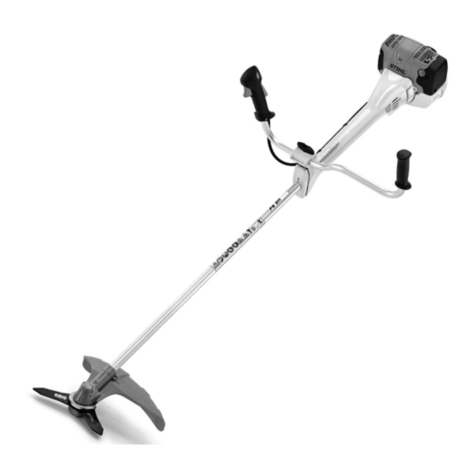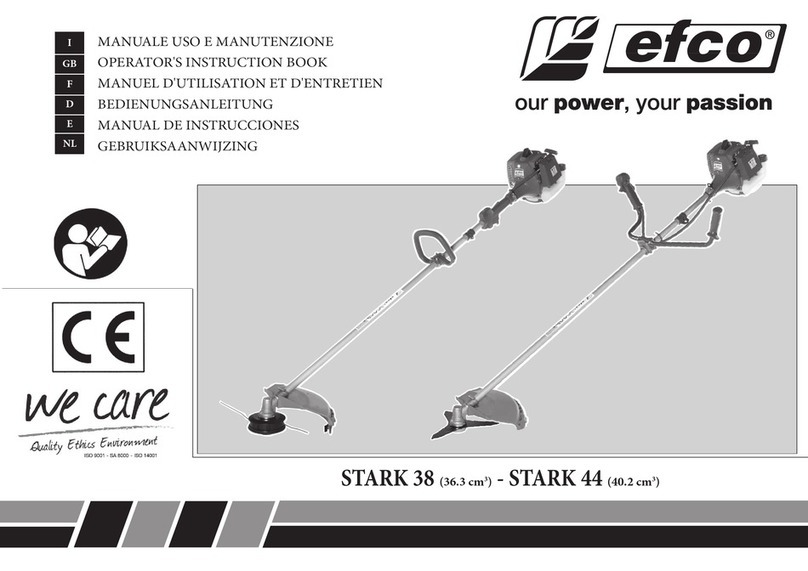
9
DESCRIPTION DU FONCTIONNEMENT
ATTENTION :
• Assurez-vous toujours que l’outil est hors tension et
débranché avant de l’ajuster ou de vérifier son
fonctionnement.
Réglage de la saillie de fraise (Fig. 1)
Pour régler la saillie de fraise, desserrez l’écrou de ser-
rage et déplacez le bâti-support de l’outil vers le haut ou
le bas, tel que désiré, en tournant la vise de réglage. Une
fois le réglage terminé, serrez fermement l’écrou de ser-
rage pour immobiliser le bâti-support de l’outil.
Interrupteur (Fig. 2)
Pour mettre l’outil en marche, déplacez le levier de l’inter-
rupteur sur la position I (marche).
Pour arrêter l’outil, déplacez le levier de l’interrupteur sur
la position O (arrêt).
ASSEMBLAGE
ATTENTION :
• Avant d’effectuer toute intervention sur l’outil, assurez-
vous toujours qu’il est hors tension et débranché.
Pose et dépose de la fraise (Fig. 3)
ATTENTION :
• N’utilisez que les clés fournies avec l’outil.
Insérez la queue de la fraise à fond dans le cône du man-
drin et serrez bien l’écrou de mandrin à l’aide des deux
clés.
Pour retirer la fraise, observez le même processus en
sens inverse.
AFFLEURAGE
Poser l’embase de l’outil sur la pièce à travailler sans que
la fraise touche quoi que ce soit. Mettez ensuite le con-
tact et attendez que la fraise ait atteint sa pleine vitesse.
Déplacez l’outil vers l’avant sur la surface de la pièce à
travailler, en maintenant l’embase bien à plat et en pro-
gressant doucement jusqu’à l’extrémité du tracé.
Pour l’affleurage de bord, la surface de la pièce à tra-
vailler doit se trouver sur la gauche de la fraise dans le
sens de progression. (Fig. 4)
NOTE :
• Si vous déplacez trop rapidement l’outil vers l’avant,
votre entaille risque d’être inégale et vous pouvez
endommager la fraise ou le moteur. Si vous le déplacez
trop lentement, vous pouvez brûler ou déteriorer
l’entaille. La vitesse correcte dépend de la dimension de
la fraise, de la nature de la pièce à tailler et de la profon-
deur de coupe. Avant de commencer, nous vous con-
seillons donc de faire un essai sur une chute ; cela vous
montrera l’allure exacte qu’aura votre entaille et vous
permettra de bien vérifier les dimensions de celle-ci.
• Lorsque vous vous servez du support d’affleurage hori-
zontal, du guide parallèle ou du guide à affleurer,
veillez à bien l’installer du côté droit de l’outil dans le
sens de la progression. Vous pourrez ainsi le maintenir
parfaitement contre la pièce que vous taillez. (Fig. 5)
ATTENTION :
• Une taille trop profonde risque de forcer le moteur ou
de rendre difficile le contrôle de l’outil ; quand vous rai-
nez, limitez donc votre profondeur de taille à 3 mm par
passage. Pour des rainures d’une profondeur supé-
rieure, opérez en plusieurs passages et en approfon-
dissant progressivement.
Guide à copier
Le guide à copier comporte un manchon au travers duquel passe la fraise ; le bord extérieur de ce manchon va se pla-
cer en appui contre le gabarit. (Fig. 6)
Retirez le déflecteur à copeaux.
Desserrez les vis, et retirez la plaque de protection de l’embase. Placez le guide à copier dans le trou central, et repo-
sez la plaque de protection avec ses vis. (Fig. 7)
Fixez le gabarit sur la pièce, puis placez le guide à copier au contact du gabarit. Déplacez alors l’outil en suivant le
gabarit. gabarit glissant sur le côté du gabarit. (Fig. 8)
NOTE :
• L’entaille proprement dite va occuper un emplacement légèrement en retrait du bord du gabarit. Pour connaître la
valeur de cet écart, et placer en conséquence le gabarit, utilisez la formule suivante :
Guide parallèle (Accessoire)
Le guide parallèle guide efficacement l’outil quand on
effectue des coupes droites en chanfreinant ou en rai-
nant. (Fig. 9)
Fixez le support de guide au guide parallèle à l’aide du
boulon et de l’écrou à oreilles. (Fig. 10)
Retirez le déflecteur à copeaux.
Fixez le guide parallèle à l’aide de la vis de serrage (A).
Desserrez l’écrou à oreilles sur le guide parallèle et ajus-
tez la distance entre la fraise et le guide parallèle. À la
distance désirée, serrez fermement l’écrou à oreilles.
Quand vous coupez, déplacez l’outil en maintenant le
guide en appui avec le côté de la pièce à travailler.
(Fig. 11)
Si la distance (A) entre le côté de la pièce à travailler et le
tracé est trop grande pour le guide parallèle, ou si ce
même côté n’est pas rectiligne, vous ne pouvez pas utili-
ser ce guide. En ce cas, fixez solidement, à l’aide de
serre-joints, une pièce de bois rectiligne à la pièce à tra-
vailler et servez-vous en comme de guide au contact de
l’embase de l’affleureuse. Déplacez celle-ci dans la
direction de la flèche. (Fig. 12)
Ecart (X) = diamètre extérieur du guide à copier – diamètre de la fraise
2
